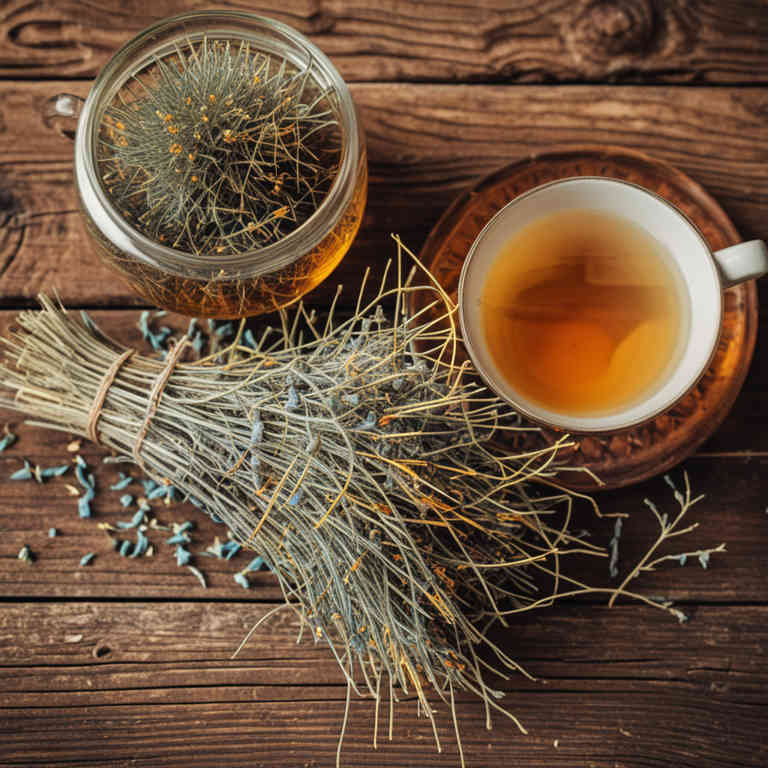Ephedra sinica tea for medicinal use

Ephedra sinica tea is a traditional herbal preparation made from the dried stems of the Ephedra sinica plant, which contains compounds like ephedrine and pseudoephedrine.
It has been used in herbalism for centuries, primarily for its bronchodilating and decongestant properties. This tea is traditionally used to relieve symptoms of asthma, nasal congestion, and respiratory infections. However, due to its potential for abuse and serious side effects, its use is highly regulated in many countries.
It is important to consult a healthcare professional before using this preparation.
Uses
Ephedra sinica tea has been used to treat respiratory conditions such as asthma, bronchitis, and nasal congestion for centuries in traditional Chinese medicine.
Historically, it was valued for its ability to open the airways and relieve breathing difficulties, often prepared as a decoction from the plant's stems. In modern times, it has been studied for its potential to alleviate symptoms of allergies and congestion, though its use is now heavily regulated due to safety concerns. Despite its traditional roots, the tea is not recommended for general use without medical supervision due to risks of toxicity and side effects.
Its historical significance remains a key part of herbal medicine history, even as its modern applications are limited.
Benefits
Ephedra sinica tea has health benefits such as aiding in weight loss, improving respiratory function, and enhancing energy levels.
It contains ephedrine, a natural stimulant that can help with bronchodilation and reduce nasal congestion. This tea is traditionally used to alleviate symptoms of asthma and allergies due to its decongestant properties. However, it should be used with caution as it may cause side effects like increased heart rate and high blood pressure.
Always consult a healthcare professional before using Ephedra sinica tea, especially for prolonged periods or in high doses.
Constituents
Ephedra sinica tea active constituents include ephedrine, pseudoephedrine, and methylephedrine, which are alkaloids known for their stimulant and bronchodilator effects.
These compounds work by stimulating the central nervous system and relaxing the smooth muscles in the airways, making the tea historically used for treating respiratory conditions like asthma and nasal congestion. However, due to its potential for abuse and serious side effects, including increased heart rate and high blood pressure, its use is heavily regulated in many countries. Despite its medicinal properties, the tea is not recommended for long-term or regular consumption without medical supervision.
It is important to note that Ephedra sinica is classified as a controlled substance in several regions due to its risks.
Preparation
To make Ephedra sinica tea, start by gathering dried Ephedra sinica leaves or stems, ensuring they are sourced from a reputable supplier and are free from contaminants.
Rinse the herbs thoroughly under running water to remove any impurities. Place the dried herbs in a heat-resistant container and pour boiling water over them, covering the mixture. Let the tea steep for 10 to 15 minutes to allow the active compounds to infuse into the water.
Strain the liquid through a fine mesh strainer or cheesecloth to remove the plant material before serving.
Side Effects
Ephedra sinica tea may lead to serious health risks due to its high concentration of ephedrine, a stimulant that can increase heart rate and blood pressure.
It is often used for weight loss and cold symptoms, but its potential for causing adverse effects is well-documented. Possible side effects include insomnia, anxiety, and gastrointestinal issues, while more severe outcomes such as heart attacks and strokes have also been reported. Long-term use can lead to dependence and may interfere with other medications.
Due to these risks, it is generally not recommended for regular or prolonged use without medical supervision.